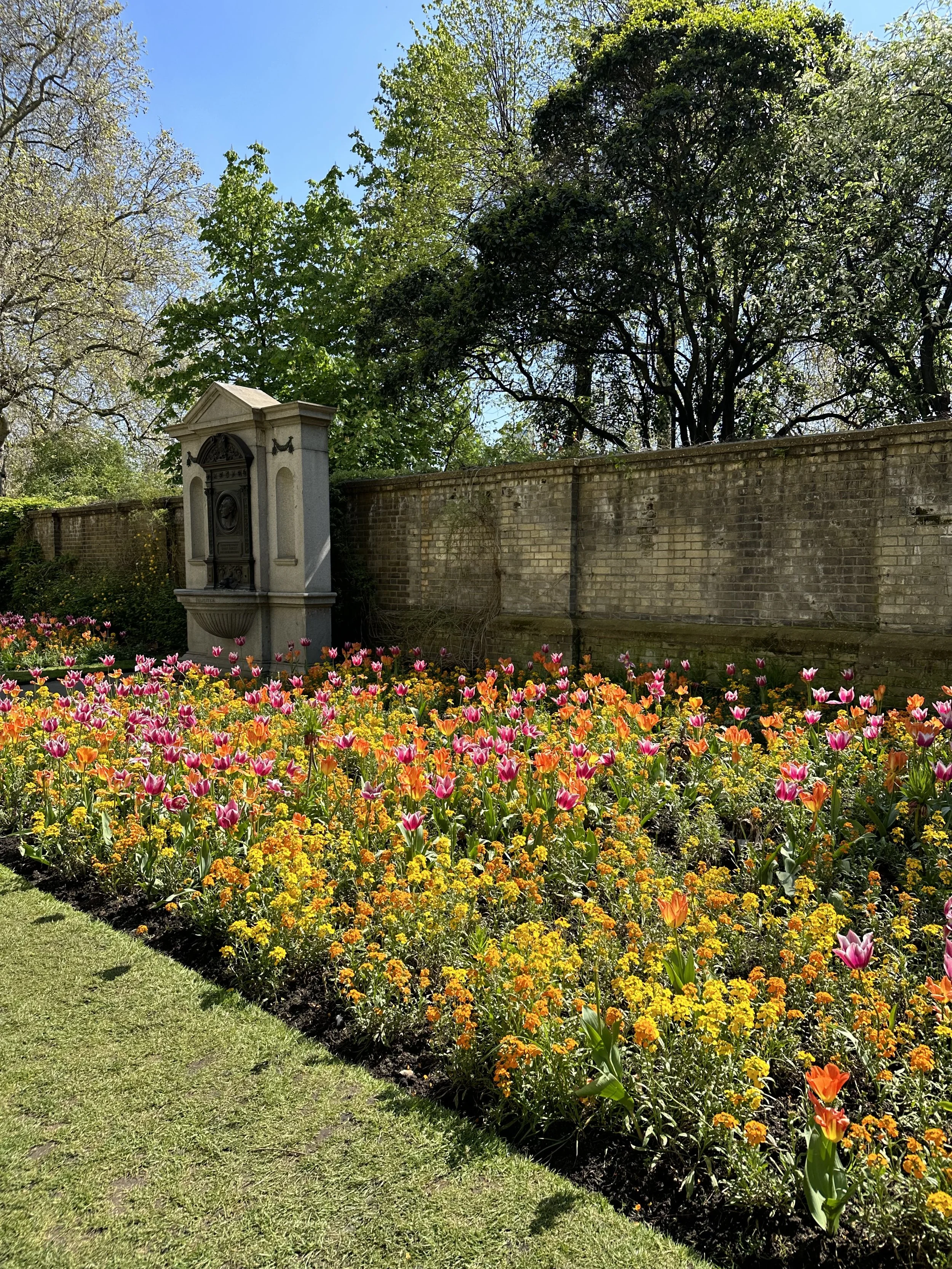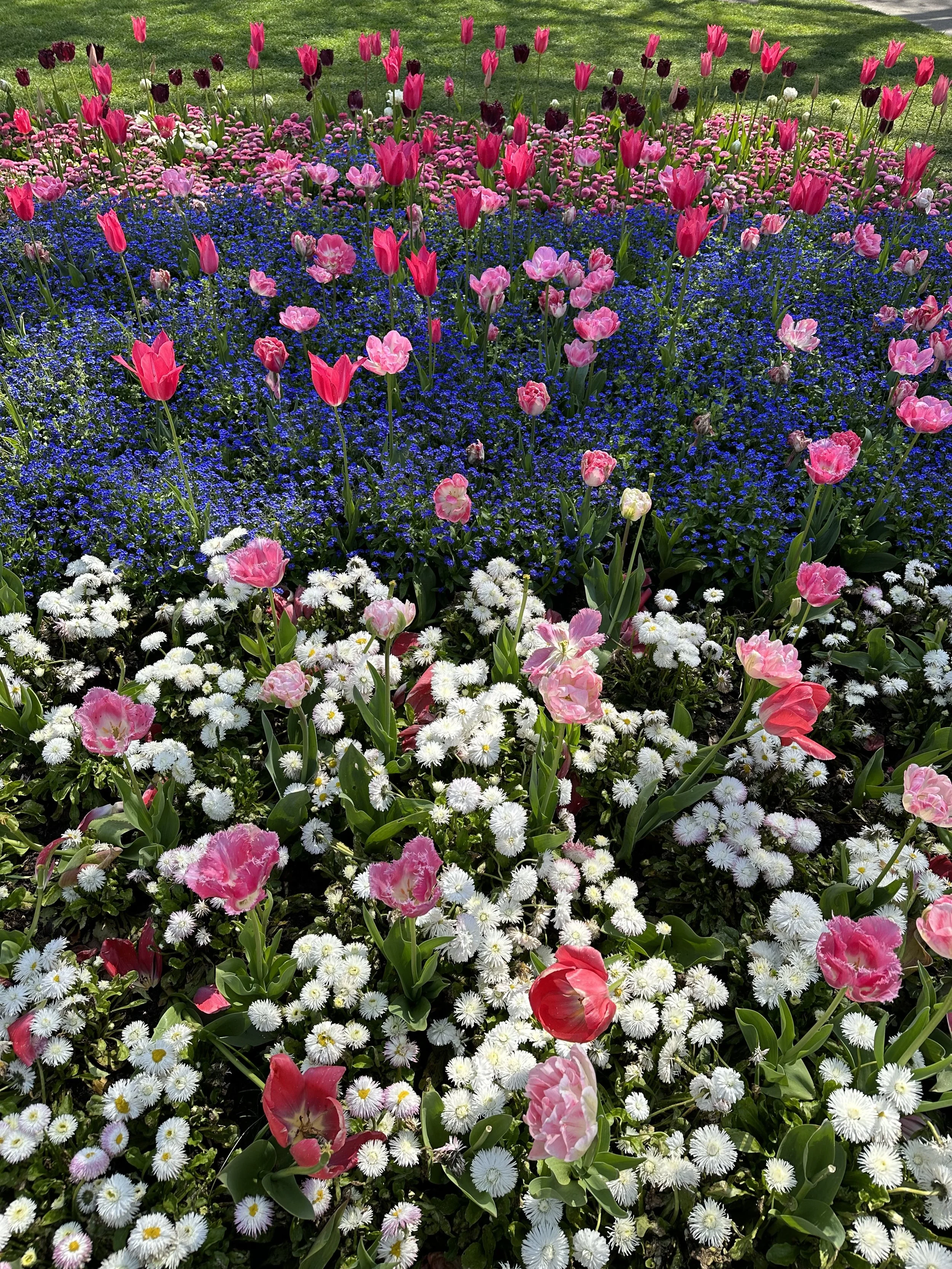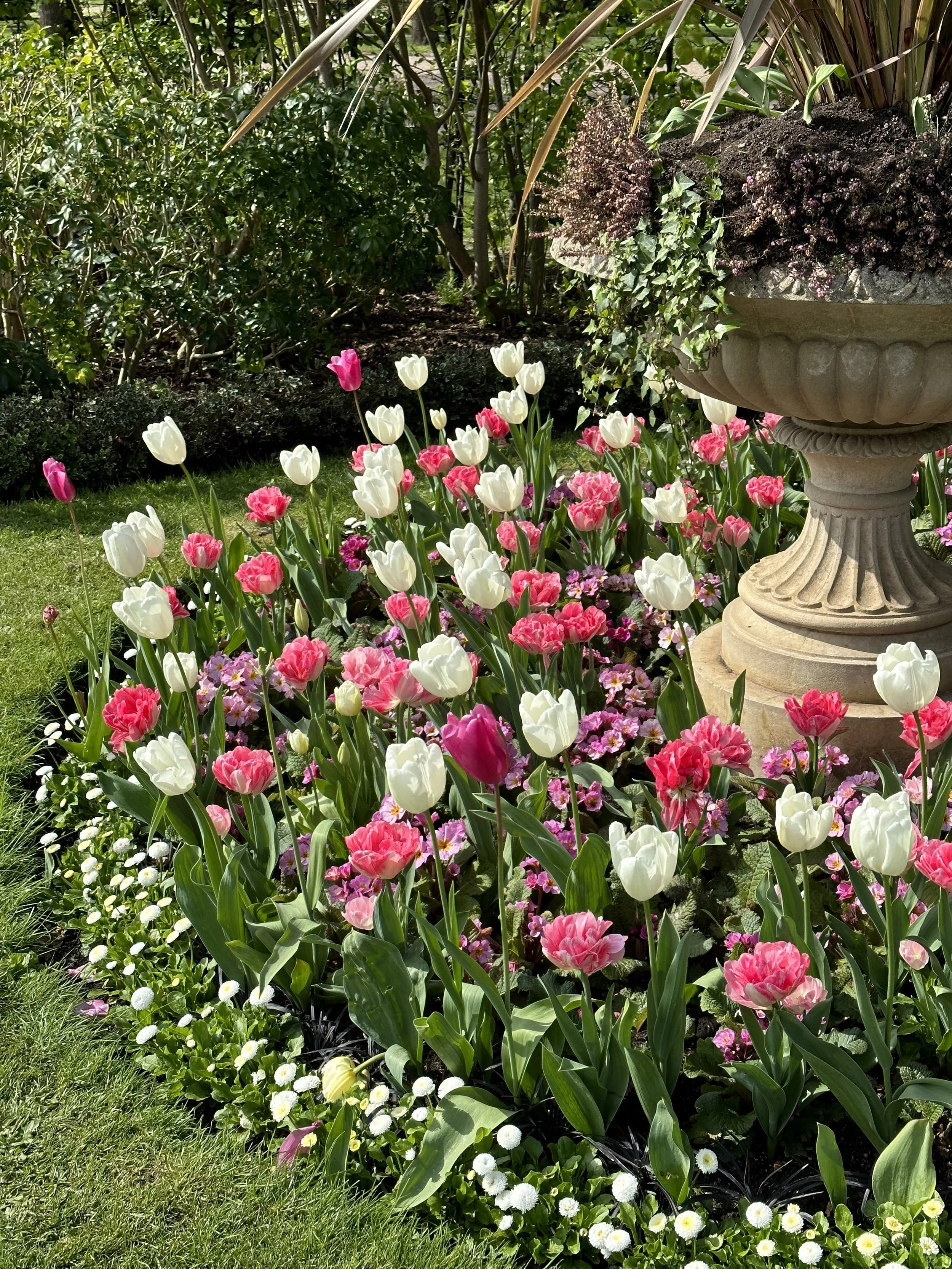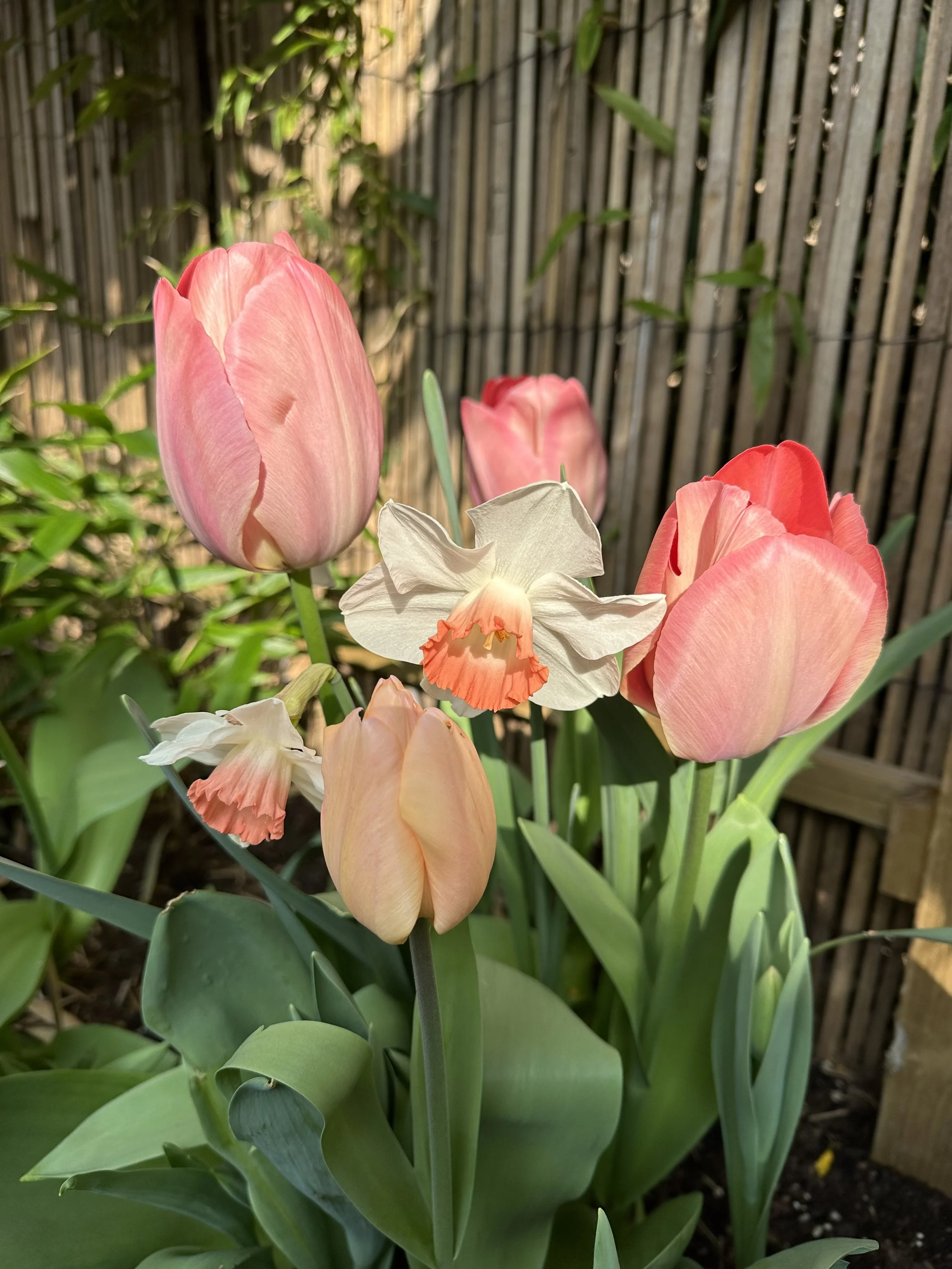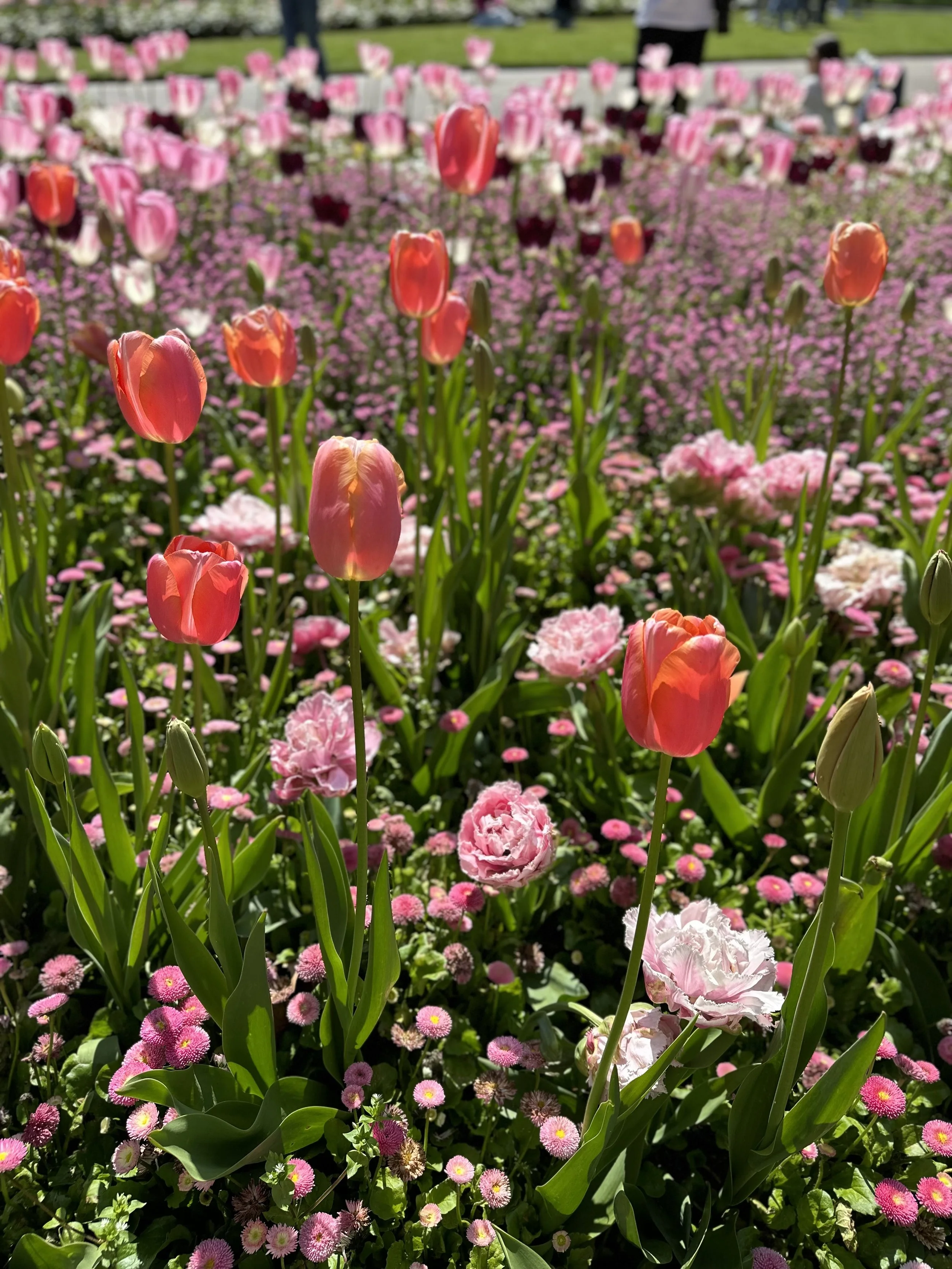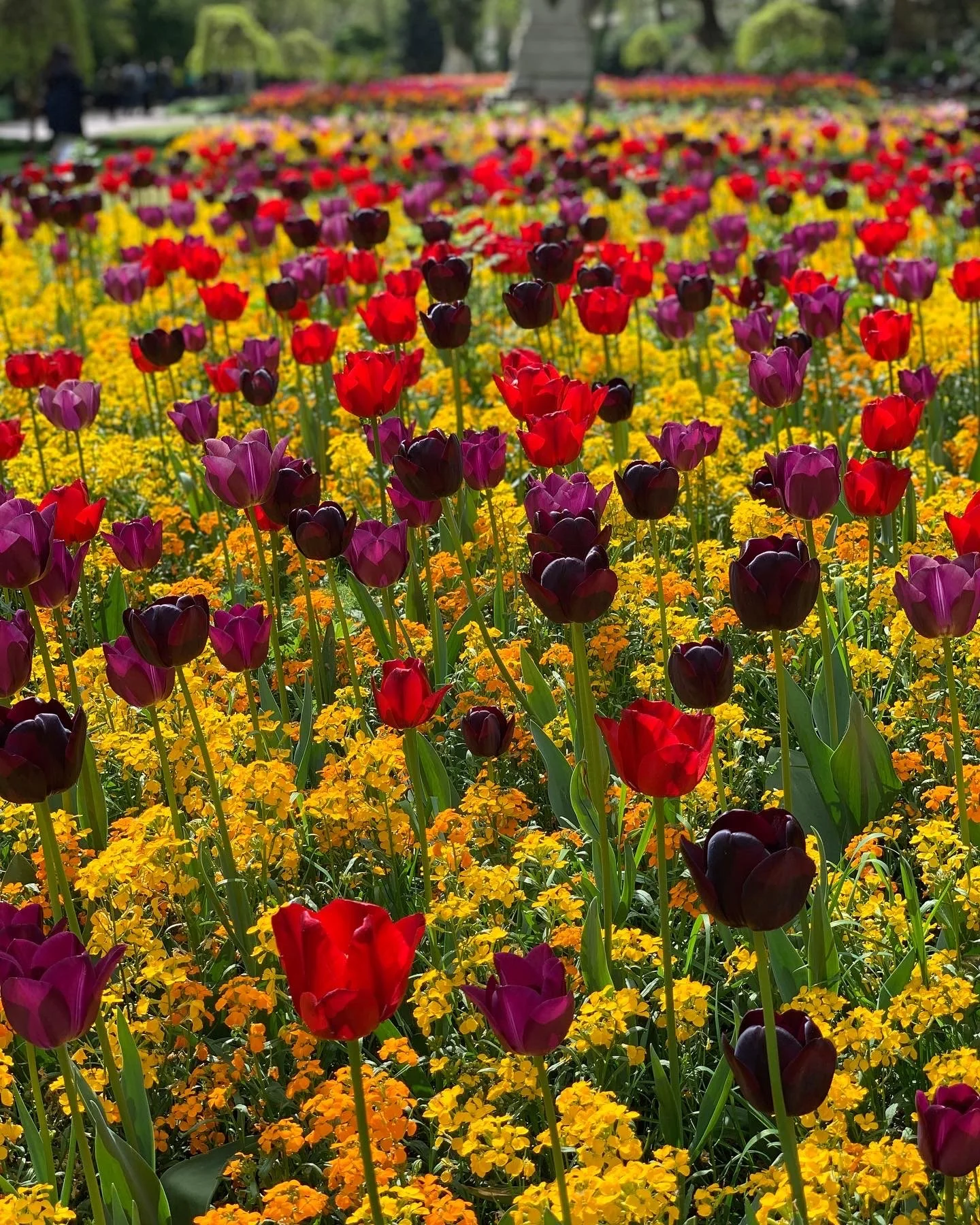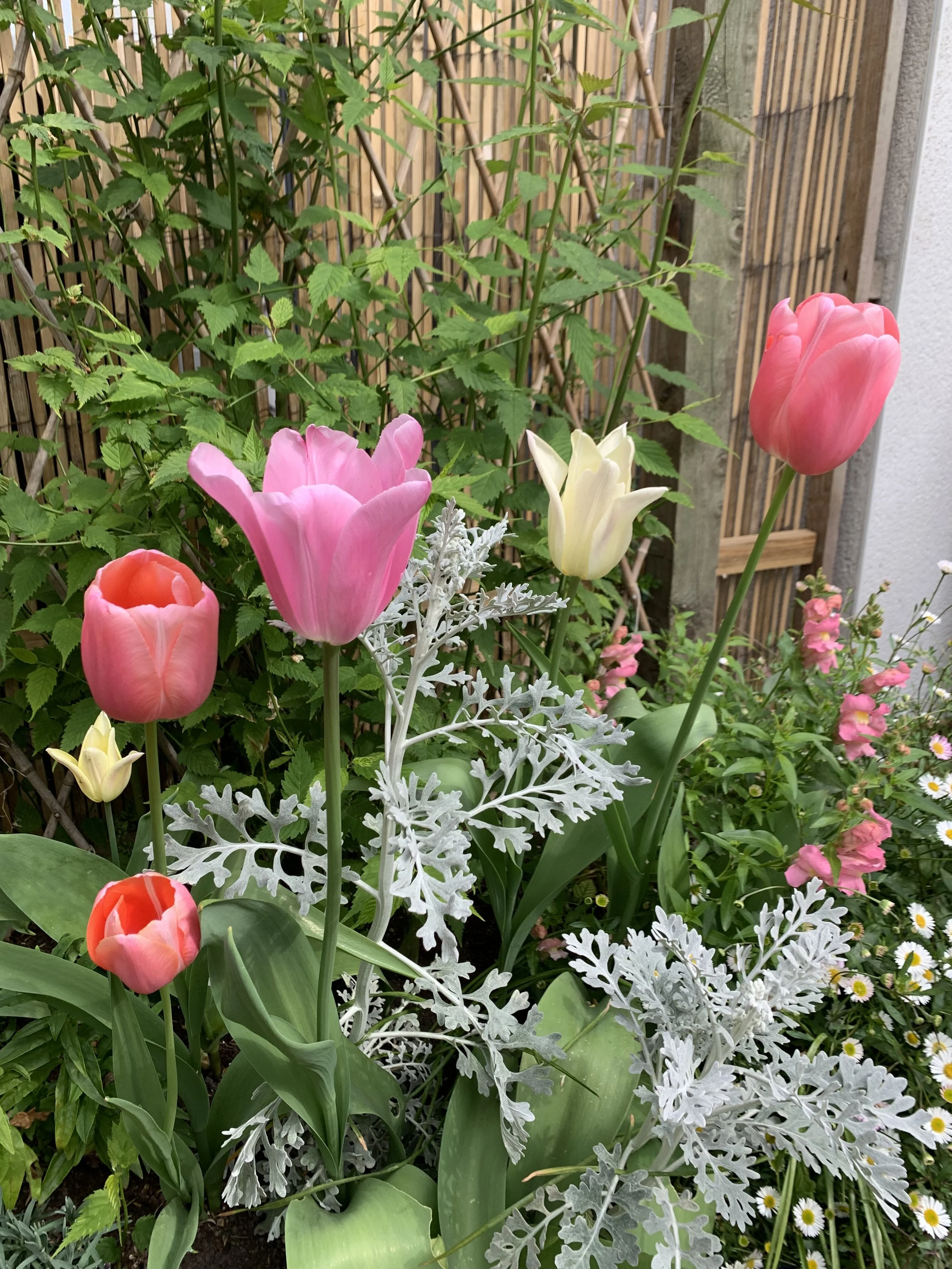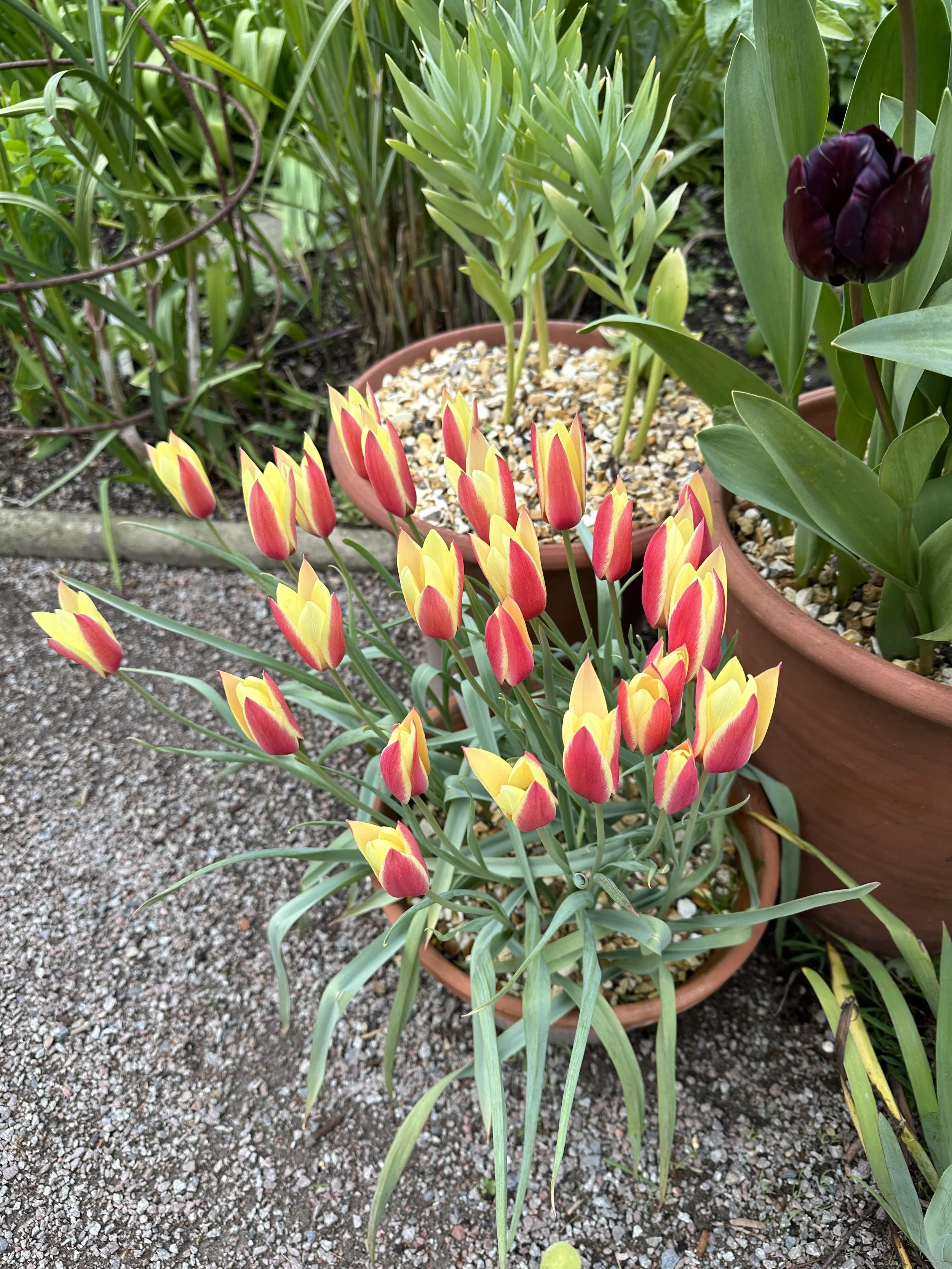How Long Do Tulips Bloom?
This article has links to products that I may make commission from.
Tulips: the very name conjures up images of vibrant colors, graceful shapes, and the heralding of spring.
These iconic flowers have captured the hearts and imaginations of gardeners and artists alike.
But beyond their aesthetic allure lies a series of questions that intrigue many: How long do tulips bloom?
What affects their blooming period? Can you prolong their life when cut and potted?
The lifecycle of tulips, from bulbs to breathtaking blossoms, is a journey marked by growth, transformation, and fleeting beauty.
Whether you're a seasoned gardener or simply someone entranced by tulips in full bloom, understanding the intricacies of these flowers is essential.
In this comprehensive guide, we will delve into the world of tulips, exploring everything from growing conditions and bloom time to the care of potted tulips and how long tulips last in various circumstances.
Whether you're searching for specific answers or a broader understanding, this guide is designed to unravel the secrets behind one of the world's most beloved flowers.
To learn more about tulips, check out my guides:
When Do Tulips Bloom?
Varieties and Bloom Time
Tulips are divided into several classes, each blooming at different times during the spring.
Here's a breakdown, including links to buy my favorites:
Early Spring: Early blooming varieties include 'Kaufmanniana' and 'Fosteriana' tulips, which can bloom as early as late March in some regions.
Mid-Spring: Darwin Hybrid and Triumph tulips typically bloom in April, filling gardens with bright colors during this time.
Late Spring: Some of the last tulips to bloom are the Single Late and Parrot tulips, which can continue to flower into May.
Geographic Factors
The bloom time of tulips is significantly influenced by the geographic location and the local climate:
Cooler Climates: In regions with cold winters and mild springs, tulips often bloom from April to May.
Warmer Climates: In milder climates, tulips may bloom slightly earlier, sometimes starting in late March.
Planting Time
When tulips bloom is also affected by when they were planted:
Fall Planting: Planting tulip bulbs in the fall, usually around September to November, ensures that they have enough chilling time to bloom in the spring.
Late Planting: If bulbs are planted later than recommended, it may delay the blooming period.
Impact of Weather
The exact timing of tulips blooming can vary year to year due to weather conditions:
Warm Winters: Mild winters can cause tulips to bloom earlier than usual.
Cold Springs: Unusually cold spring weather can delay tulip blooming.
The bloom time of tulips is a beautiful yet complex phenomenon shaped by various factors, including the tulip variety, geographic location, planting time, and local weather conditions. Understanding these nuances helps in planning a garden, allowing for continuous blooms throughout the spring season.
Whether you are looking to enjoy the early vibrance of 'Kaufmanniana' tulips or the late elegance of Parrot tulips, knowing when tulips bloom in your area can lead to a more fulfilling gardening experience.
Looking for more bulb inspiration? Check out my guides:
Secrets to Successfully Planting Allium Bulbs
My favorite tulip bulbs to grow:
How Long Do Tulips Bloom For?
Tulip Variety
Different tulip varieties have different bloom durations:
Early Blooming Tulips: These often last for about a week or slightly more.
Mid-Season Tulips: They can last up to two weeks if the weather is favorable.
Late Blooming Tulips: Some late bloomers are known to last up to three weeks or more.
Growing Conditions
Soil: Well-drained soil rich in nutrients can enhance the bloom duration.
Sunlight: Tulips need at least 6 to 8 hours of sunlight to bloom well. Adequate sunlight contributes to a more extended blooming period.
Water: Regular but not excessive watering helps in prolonging the bloom time. For more watering tips, check out my guide How to Use Watering Globes.
Weather Factors
Temperature: Mild temperatures with cool nights and warm days are ideal for longer tulip blooms.
Unexpected Weather: A sudden heatwave or frost can shorten the blooming period.
Care and Maintenance
Fertilization:
A balanced fertilizer applied at the right time can nourish the tulips and extend the blooming period.
Here is the fertilizer I recommend using:
Pruning:
Removing spent flowers (deadheading) can sometimes promote longer bloom time in certain varieties.
Pests and Diseases:
Protection against pests and diseases ensures a healthy plant, which can bloom longer.
Cut Tulips
In a Vase: Cut tulips can last anywhere from a few days to a week or more with proper care. Fresh water, a clean vase, and a cool location away from direct sunlight and heat can prolong their life.
Without Water: Tulips without water will wilt within a day or two.
Impact of Successive Planting
Planting a combination of early, mid, and late-season tulips can result in continuous blooming for up to six weeks in the garden.
How long tulips bloom for is influenced by a multifaceted set of factors, including variety, growing conditions, weather, and care.
Gardeners aiming to maximize the bloom time can choose specific varieties and provide optimal care to enjoy these magnificent flowers for as long as possible.
Monitoring weather patterns and understanding the specific needs of the chosen varieties can result in a garden filled with the beauty of blooming tulips for an extended time, making all the effort worthwhile.
For more bulb planting tips, check out my guides:
How Long Do Cut Tulips Last?
Typical Lifespan
Cut tulips generally last anywhere from 3 to 7 days, depending on several factors like freshness, care, and environmental conditions.
Factors Affecting Longevity
Freshness at the Time of Cutting:
Recently Cut: Tulips that are cut at their prime stage, typically when the buds are still slightly closed, will generally last longer.
Overly Mature Cut: If tulips are cut after fully opening, their lifespan may be shortened.
Water and Nutrition
Fresh Water: Regularly changing the water in the vase prevents bacterial growth and prolongs the tulips' life.
Flower Food: Adding commercial flower food or a homemade solution with sugar can nourish the flowers and extend their longevity.
Environmental Conditions
Temperature: Keeping cut tulips in a cool room away from direct sunlight and heat sources will help them last longer.
Humidity: A moderate humidity level helps in retaining the freshness of the flowers.
Proper Handling
Cutting Technique: Cutting the stems at a 45-degree angle and under running water allows better water uptake, promoting longevity.
Avoiding Damage: Handling the tulips gently and avoiding crushing the stems helps in maintaining their structure and appearance.
Tips to Prolong the Life of Cut Tulips
Recut the Stems: Every few days, trim the stems to enhance water absorption.
Use a Clean Vase: Ensure the vase is clean to prevent bacteria from affecting the tulips.
Remove Leaves Below Water Line: This prevents decay and bacterial growth.
Avoid Drafts and Heat Sources: Place the vase away from vents, radiators, and windows with direct sunlight.
Monitor Water Level: Tulips can drink a lot, so make sure to keep the vase filled.
How long cut tulips last can vary, but with mindful care and attention to detail, you can enjoy their elegance for up to a week or even longer.
From the moment of cutting to the choice of vase and room, every aspect plays a role in determining the longevity of these beautiful flowers.
By employing the right techniques and care regimen, you can extend the life of your cut tulips and continue to enjoy their vibrant beauty and delicate charm.
Whether as a thoughtful gift or a personal indulgence, cut tulips offer a fleeting yet unforgettable visual delight.
For more inspiration, check out my guides:
Growing Tulips: Tips and Techniques
The growing conditions significantly impact how long a tulip bloom lasts. Ensuring proper soil, sunlight, and water will prolong the bloom.
Soil
Type: Well-drained soil is essential for tulips. A sandy loam soil that provides proper drainage helps prevent bulb rot.
pH Level: A slightly acidic to neutral pH (6.0 to 7.0) is usually best for tulips.
Here is the soil pH test kit I use:
Sunlight
Full Sun: Tulips thrive with at least 6 to 8 hours of direct sunlight. This sunlight fuels the growth, health, and blooming of the bulbs.
Water
Watering Needs: Tulips require consistent moisture, especially during their growth phase. However, overwatering can lead to bulb rot, so careful watering is essential.
Temperature
Cold Requirement: Tulips need a chilling period of cold temperatures (35-55°F or 2-13°C) for 12 to 16 weeks to initiate the blooming process.
Spring Temperature: Mild spring temperatures prolong the blooming period and help the tulips flourish.
Planting Depth and Spacing
Depth: Tulip bulbs should be planted at a depth that is three times the height of the bulb.
Spacing: Bulbs should be spaced about 4 to 6 inches apart to allow enough room for growth.
Fertilization
Type of Fertilizer: A balanced slow-release fertilizer, with equal parts of nitrogen, phosphorous, and potassium, is usually best.
Timing: Fertilizing in the fall at planting time gives the bulbs nutrients for the growing season.
Pests and Diseases
Protection against common pests like aphids and rodents, as well as diseases such as tulip fire and bulb rot, ensures a healthy growth cycle.
Consideration for Potted Tulips
Pot Size: The pot should be large enough to accommodate the bulbs with proper spacing.
Drainage: Pots must have good drainage to prevent waterlogging.
Impact of Varieties
Different tulip varieties may have specific needs or tolerances, so choosing the right type for your climate and soil can enhance success.
Growing tulips is a delightful experience that heralds the arrival of spring.
By understanding and providing the optimal growing conditions—soil, sunlight, water, temperature, planting depth, and fertilization—you can enjoy the breathtaking beauty of tulip blooms in your garden or pots.
Whether you're planting traditional garden tulips or experimenting with exotic varieties, these insights into their growing conditions can help you create a colorful and vibrant display that celebrates one of nature's most iconic flowers.
Attention to detail and a love for gardening can transform tulip bulbs into a spectacular floral showpiece, year after year.
For more ideas, check out my guide:
How Long Does it take for a Tulip to Grow?
From planted bulbs to blooming flowers, how long does it take tulips to bloom varies from 5 to 8 months.
1. Planting the Bulbs (Fall)
Tulip bulbs are typically planted in the fall, from late September to November, depending on the climate zone.
2. Cold Stratification Period (Winter)
Tulips require a chilling period during winter, usually lasting between 12 to 16 weeks. This chilling process triggers the biochemical responses necessary for growth and flowering.
3. Emergence of Leaves (Early to Mid-Spring)
Once the chilling requirement has been met and the soil begins to warm, the leaves start to emerge. This process may take a few weeks, starting from late winter to early spring.
4. Stem Growth and Flower Formation (Spring)
After the leaves appear, the stem begins to grow, and the flower bud forms inside the protective leaf sheath. This stage may last anywhere from 2 to 4 weeks.
5. Blooming (Spring)
The final stage, blooming, depends on the tulip variety and the growing conditions:
Early Bloomers: These can flower as early as late March and last a week or more.
Mid-Season Bloomers: Typically blooming in April, they may last up to two weeks.
Late Bloomers: Flowering into May, some late bloomers can last up to three weeks or longer.
Factors That Can Affect Growth Time
Variety: Different tulip varieties have specific growth periods and blooming times.
Weather: Unusual weather conditions can accelerate or delay the growth process.
Soil Quality: Nutrient-rich, well-drained soil fosters optimal growth.
Sunlight: Adequate sun exposure is crucial for healthy growth and blooming.
Care and Maintenance: Proper care, including watering and fertilization, impacts the overall growth cycle.
For more tips, check out my guide:
How to Care for Tulip Bulbs
Understanding how to care for tulip bulbs ensures healthy growth and long blooming tulips.
Before Planting
Selection: Choose healthy, firm bulbs without signs of disease or damage.
Storage: If not planting immediately, store bulbs in a cool, dry, and dark place, ideally around 55°F (13°C).
Planting Time
Planting Depth: Plant the bulbs at a depth three times their height.
Spacing: Allow 4 to 6 inches between bulbs to provide room for growth.
Soil: Use well-drained soil enriched with compost or slow-release fertilizer.
Watering: Water the newly planted bulbs to settle the soil around them.
During Growth
Watering: Maintain consistent moisture but avoid overwatering, as this can cause rot.
Fertilization: Apply a balanced fertilizer in early spring as leaves emerge.
Sunlight: Ensure that the bulbs receive at least 6 to 8 hours of direct sunlight.
Protection: Guard against pests such as rodents that might dig up the bulbs.
After Blooming
Deadheading: Remove spent flowers to prevent the plant from putting energy into seed production, but leave the leaves intact.
Leaves: Allow the leaves to die back naturally, as they provide energy for the next year's growth.
Fertilizing: Some gardeners choose to fertilize again after blooming to nourish the bulbs for the next season.
Digging and Storing Bulbs (if necessary)
When to Dig: In areas with hot summers or where tulips are treated as annuals, bulbs may be dug up after the leaves have yellowed.
How to Store: Clean off the soil and store the bulbs in a cool, dark place with good air circulation. Place them in a netted bag or paper bag with some peat moss or newspaper to absorb moisture.
Replanting: If reusing bulbs, inspect them for quality, and replant them in the fall.
Potted Tulips
Soil and Drainage: Use a quality potting mix with good drainage for potted tulips.
Watering and Sunlight: Monitor water and sunlight as per garden tulips, adjusting for the container environment.
Winter Care: If potted tulips are to be overwintered, they may need additional protection from extreme cold.
Check out my guide: Container Color: Easy Steps to Growing Bulbs in Pots.
FAQs
How to prune tulips after they bloom?
After tulips bloom, you can deadhead (remove) the spent flowers to prevent seed production.
Leave the leaves intact, allowing them to die back naturally, as they provide energy for next year's growth.
How long do tulips last without water?
Cut tulips without water will start to wilt within a day or so. In the garden, tulips need consistent moisture but can tolerate brief dry spells, especially once they've finished blooming.
Lack of water over an extended period can stress the plants and reduce future blooming.
How Long Do Tulips Last When Cut and Potted?
Potted tulips may last longer if well taken care of. The duration can extend up to a few weeks.
What to Do with Tulips After They Bloom in Water?
After the bloom, some care procedures help in preserving the bulbs for the next year.
Do Tulips Bloom in Summer?
No, tulips don't bloom in summer; they are spring flowers.
When are tulips in season?
Tulips are in season during the spring, typically blooming from late March to May, depending on the variety and location.
How long do tulips live?
Garden tulips generally live and bloom for several years, although some may decline after a few years without proper care. Cut tulips last around 3 to 7 days.
How often do tulips bloom?
Tulips bloom once a year, during the spring.
Are tulips spring flowers?
Yes, tulips are considered spring flowers, as they bloom in the spring season.
How many weeks to flower?
From planting in the fall, it typically takes around 15 to 30 weeks for tulips to flower, depending on the variety and growing conditions. After the leaves emerge in spring, it usually takes 2 to 4 weeks for the tulips to bloom.
Whether in a garden or potted, understanding how long tulips last and the factors that determine their bloom time will allow you to enjoy these beautiful flowers for as long as possible. From how long do tulips take to bloom to what to do with tulips after bloom, this guide covers it all.
So grab your bulbs and start planting this season, and don't forget to search for more tips on enjoying these fantastic spring beauties.
Disclosure: I only recommend products I would use myself and all opinions expressed here are our own. This post may contain affiliate links that at no additional cost to you, I may earn a small commission. It is a great way to support the blog if you were planning to buy the item anyway.
